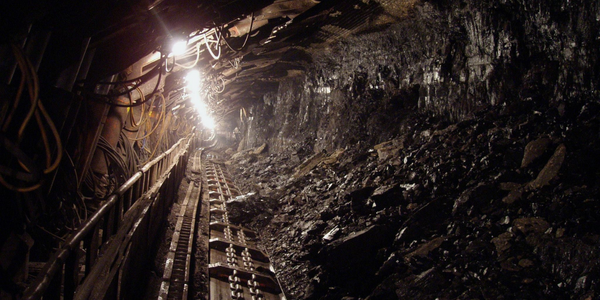Technology Category
- Analytics & Modeling - Process Analytics
Applicable Industries
- Finance & Insurance
- Mining
Use Cases
- Leasing Finance Automation
- Material Handling Automation
About The Customer
Ingram Micro is a global technology giant with a transaction volume of $50 billion. The company processes millions of sales and purchase orders, making execution a critical aspect of their operations. Ingram Micro's mission is to deliver on the promise of technology for its customers. The company has a large workforce, with over 3,000 associates who had to transition from a 100% in-office environment to a 100% remote environment due to the COVID-19 pandemic. The company has a 40-year history, during which many of its processes have evolved rather than being intentionally designed, leading to inefficiencies and a lack of optimization.
The Challenge
Ingram Micro, a global technology giant, was facing challenges in optimizing its Order-to-Cash processes. The company, with a transaction volume in billions, had to process millions of sales and purchase orders, making execution a critical aspect of their operations. However, many of their processes were not designed intentionally but had evolved over the company's 40-year history. This led to inefficiencies and a lack of optimization. The company's mission was to deliver on the promise of technology for its customers, but the existing processes were hindering their ability to focus on customer interaction and drive digital transformation. Furthermore, the COVID-19 pandemic brought about unprecedented disruption, forcing the company to transition 3,000 associates from a 100% in-office environment to a 100% remote environment within a two-hour window. This sudden shift necessitated major process transformations.
The Solution
Ingram Micro turned to Celonis EMS to identify opportunities for optimization and automation across its Order-to-Cash processes. The company established process excellence Centers of Excellence (COEs) within the Global Business Services (GBS) team. Through these COEs, they identified inefficiencies across the business and used that insight to streamline all operations. They also worked closely with country-specific teams to find the metrics best suited to help them achieve their goals. One focus area that emerged from these conversations was working capital. By using process mining to improve working capital, they were able to drive cash flow and the bottom line for teams around the world. In response to the COVID-19 pandemic, the company had to revisit many of their processes to adapt to the new remote working conditions. For instance, the onboarding process had to be completely rebuilt for virtual workflows.
Operational Impact
Quantitative Benefit

Case Study missing?
Start adding your own!
Register with your work email and create a new case study profile for your business.
Related Case Studies.

Case Study
Underground Mining Safety
The goal was to produce a safety system to monitor and support underground mining operations; existing systems were either too simple (i.e. phone line) or overly complex and expensive, inhibiting deployment, and providing little-to-no support in event of an accident. Given the dangerous nature of the mining work environment and the strict regulations placed on the industry, the solution would have to comply with Mine Safety and Health Administration (MSHA) regulations. Yet the product needed to allow for simple deployment to truly be a groundbreaking solution - increasing miner safety and changing daily operations for the better.

Case Study
Mining Firm Quadruples Production, with Internet of Everything
Dundee Precious Metal’s flagship mine, in Chelopech, Bulgaria, produces a gold, copper, and silver concentrate set a goal to increase production by 30%. Dundee wanted to increase production quality and output without increasing headcount and resources, improve miner safety, and minimize cost.

Case Study
Fastenal Builds the Future of Manufacturing with MachineMetrics
Fastenal's objective was to better understand their machine downtime, utilization, quality issues, and to embrace cutting-edge manufacturing technology/process improvement capabilities to bring their team to the next level. However, there was a lack of real-time data, visualization, and actionable insights made this transition impossible.

Case Study
Real-time In-vehicle Monitoring
The telematic solution provides this vital premium-adjusting information. The solution also helps detect and deter vehicle or trailer theft – as soon as a theft occurs, monitoring personnel can alert the appropriate authorities, providing an exact location.“With more and more insurance companies and major fleet operators interested in monitoring driver behaviour on the grounds of road safety, efficient logistics and costs, the market for this type of device and associated e-business services is growing rapidly within Italy and the rest of Europe,” says Franco.“The insurance companies are especially interested in the pay-per-use and pay-as-you-drive applications while other organisations employ the technology for road user charging.”“One million vehicles in Italy currently carry such devices and forecasts indicate that the European market will increase tenfold by 2014.However, for our technology to work effectively, we needed a highly reliable wireless data network to carry the information between the vehicles and monitoring stations.”

Case Study
Joy Mining Systems
Joy equipment faces many challenges. The first is machine integration and control. The business end of the machine has a rapidly-spinning cylinder with 6-inch diamond-studded cutting teeth. It chews through rock at rates measured in tens of tons per minute. The system grinds through the rock in front, creating a rectangular mine tunnel. Hydraulic lifters support the ceiling as the machine moves forward. Automated drills and screws drive 3-ft long screws into the ceiling to stabilize it. The rock and coal fall into a set of gathering "fingers" below the cutting cylinder. These fingers scoop up the rock and coal and deposit it onto a conveyor belt. The conveyor passes under the machine and out the back. A train of conveyor belt cars, up to a mile long, follows the cutter into the mine. The rock shoots along this train at over 400 feet per minute until it empties into rail cars at the end. Current systems place an operator cage next to the cutter. Choking dust (potentially explosive), the risk of collapse and the proximity of metal and rock mayhem make the operator cage a hazardous location.

Case Study
Safety First with Folksam
The competitiveness of the car insurance market is driving UBI growth as a means for insurance companies to differentiate their customer propositions as well as improving operational efficiency. An insurance model - usage-based insurance ("UBI") - offers possibilities for insurers to do more efficient market segmentation and accurate risk assessment and pricing. Insurers require an IoT solution for the purpose of data collection and performance analysis







